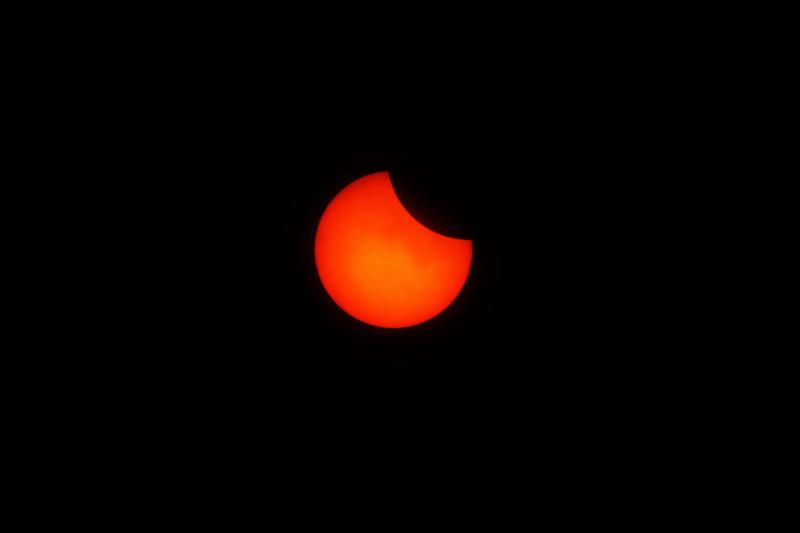In the vast tapestry of celestial events that captivate human imagination, few phenomena command the same awe-inspiring reverence as a total solar eclipse. On the cusp of spring in April 2024, the enchanting Natural State of Arkansas is poised to become the theater for a cosmic spectacle of unparalleled grandeur. As the moon gracefully dances between the Earth and the Sun, daylight will yield to profound darkness, transforming the daytime sky into a celestial canvas of wonder. Join us as we embark on an exploration of not only the science behind this remarkable event, but also the cultural, emotional, and existential impact a total solar eclipse can have on those fortunate enough to witness it. In this article, we journey deep into the heart of Arkansas, where science and wonder converge, and where a fleeting moment of cosmic alignment reminds us of our small yet interconnected place in the universe.
What Is A Solar Eclipse?
A solar eclipse is a breathtaking astronomical event that occurs when the Moon passes between the Earth and the Sun, casting a shadow on the Earth’s surface and temporarily blocking the Sun’s light. There are two primary types of solar eclipses: partial solar eclipses and total solar eclipses.
- Partial Solar Eclipse: During a partial solar eclipse, the Moon only partially covers the Sun’s disk from the viewpoint of the observer on Earth. This creates a celestial spectacle where a portion of the Sun’s bright disk appears to be obscured by the Moon’s silhouette. The extent of coverage varies depending on the Moon’s position in its orbit and the observer’s location on Earth.
- Total Solar Eclipse: A total solar eclipse is a more rare and dramatic event. It occurs when the Moon aligns perfectly with the Sun and Earth, resulting in the Moon completely covering the Sun’s disk. This alignment causes the Sun’s corona, the outer atmosphere, to become visible as a shimmering halo of light around the darkened disk of the Moon. Total solar eclipses are remarkable moments of eerie darkness during daytime, and they provide a unique opportunity for scientists to study the Sun’s corona and its behavior.
Scientific Explanation:
The phenomenon of a solar eclipse is grounded in the mechanics of celestial motion and geometry:
- Orbital Mechanics: The Earth orbits the Sun, and the Moon orbits the Earth. These orbits are not perfect circles, but rather ellipses. Because of this elliptical shape, the distances between the Sun, Earth, and Moon vary over time.
- Alignment: For a solar eclipse to occur, the Sun, Moon, and Earth must align in a nearly straight line. This alignment happens when the Moon is in the “new moon” phase, positioned between the Earth and the Sun.
- Angular Size: From Earth’s perspective, both the Sun and the Moon appear to have roughly the same angular size, even though the Sun is much larger. This is due to the Sun’s much greater distance from Earth. The coincidence of similar angular sizes is why the Moon can appear to fully cover the Sun during a total solar eclipse.
- Shadow Creation: The Moon casts two types of shadows on Earth during a solar eclipse: the penumbra and the umbra. The penumbra is a lighter, outer shadow where only a portion of the Sun’s light is blocked. The umbra is a darker, inner shadow where all of the Sun’s direct light is blocked.
- Totality: In the path of the Moon’s umbra, an observer on Earth experiences a total solar eclipse. As the Moon moves across the Sun, the sky darkens, stars become visible, and the Sun’s corona becomes apparent. The corona is normally not visible due to the Sun’s intense glare.
The rare and awe-inspiring nature of a total solar eclipse draws scientists, astronomers, and enthusiasts from around the world. It provides an opportunity to study the Sun’s outer atmosphere, test theories of relativity, and inspire a sense of wonder about the universe’s intricate workings. The upcoming total solar eclipse in Arkansas on April 8, 2024, promises to be a captivating event that will both illuminate the science of the cosmos and remind us of the grandeur of the universe.
NASA Interactive Map of the Path of The Eclipse
How to Safely View The Solar Eclipse
While witnessing a solar eclipse can be a mesmerizing experience, it’s crucial to protect your eyes from the intense sunlight during this event. Here are the safe ways to view a solar eclipse:
- Solar Eclipse Glasses: These are specially designed glasses with solar viewing filters that block out harmful levels of sunlight. Make sure the glasses you use are compliant with international safety standards (ISO 12312-2), and check for any damage or scratches on the lenses before use. Never use regular sunglasses, homemade filters, or unverified glasses, as they do not offer sufficient protection.
- Pinhole Projector: This is a simple and safe method to indirectly view the eclipse. Create a small hole in a piece of cardboard or paper and let the sunlight pass through it onto another surface, such as a second piece of cardboard or the ground. You will see an image of the crescent Sun projected onto the surface. Remember to stand with your back to the Sun while using this method. Learn how to make a pinhole projector from NASA.
- Telescopes with Solar Filters: If you have a telescope, you can attach a solar filter specifically designed for telescopic viewing. This filter fits over the front aperture of the telescope and reduces the intensity of sunlight, allowing you to view the eclipse safely. Always make sure the filter is securely in place and doesn’t have any damage.
- Solar Binoculars: Similar to telescopes, solar binoculars equipped with appropriate solar filters are another option for safe eclipse viewing. These binoculars provide a larger field of view than telescopes, making them suitable for observing various phases of the eclipse.
- Live Streams and Broadcasts: If you’re unable to access proper viewing equipment or if the eclipse isn’t visible from your location, many reputable sources and organizations live-stream the event online. Watching a live broadcast can offer a safe and detailed view of the eclipse.
- Eclipse Viewing Events: Local astronomy clubs, science centers, and planetariums often organize public viewing events for solar eclipses. These events provide access to telescopes with solar filters and knowledgeable experts who can guide you through the viewing process safely.
Remember these important safety tips:
- Never look directly at the Sun without proper eye protection, even during a partial eclipse.
- Regular sunglasses, unfiltered cameras, and unverified glasses do not provide sufficient protection.
- Supervise children at all times to ensure they’re using safe viewing methods.
- Remove solar filters only when the Sun is completely covered by the Moon during the total phase of the eclipse.
- If you experience any discomfort or vision problems after viewing an eclipse, seek medical attention immediately.
By following these guidelines and using proper equipment, you can enjoy the awe-inspiring beauty of a solar eclipse without compromising your eye safety.
Destinations for Viewing in Arkansas
Many cities large and small are preparing for the influx of visitors that are sure to arrive to view this amazing spectacle. If you are planning to visit Arkansas for the opportunity to catch this once-in-a-lifetime opportunity, it is important to begin planning now.
If you plan to stay in a hotel you should probably plan to make reservations soon. Many places are becoming fully booked already. If you plan on visiting one of the State or National Parks, it is probably a good idea to plan to arrive and stay for several days before the expected influx of thousands of people around the time of the eclipse.
Don’t worry, the path of totality enters the southwest corner of Arkansas and continues right across the state to the northeast corner. This gives you plenty of area to find the perfect place to view the eclipse.
Further Considerations
One of the main determining factors of whether you can view the eclipse will be the weather. As the date draws near be sure and monitor the short-term weather forecast.
We traveled to see the last solar eclipse in our area in 2017. We traveled into Missouri and had a hotel booked and an open park area to view from. The weather cooperated with us and allowed me to get some awesome photos. One of those photos was picked up by some national websites, including Space.com. I’ve included that photo below.

Save Your Eclipse Viewing Equipment
Don’t pack away your eclipse glasses or solar filters after the eclipse. They can also be used to view the sun anytime. That means you can use them to view sunspots and other interesting solar phenomena, such as planetary transits.
So save all your equipment and think of the purchase as an investment that you can enjoy again and again as you learn more about our nearest star.
Conclusion
The 2024 solar eclipse in Arkansas will undoubtedly leave an indelible mark on those fortunate enough to witness it. So, mark your calendars for April 8, 2024, make your plans, and join the world as it pauses to gaze skyward in collective wonder. As the Moon’s shadow sweeps over the landscape, an eerie quiet will descend and you will experience one of the most surreal environments that humans can experience.
Be sure and check some of our hiking articles for ideas about other places to view the eclipse you may have overlooked.
FAQs:
Q: Where is the best place to see the 2024 eclipse?
A: The best places to view the 2024 solar eclipse are within the path of totality, which stretches from Mexico through the United States to Canada. Cities like Austin, Dallas, Little Rock, Indianapolis, Cleveland, and Buffalo offer prime viewing locations, but the best spot depends on factors like weather and accessibility.
Q: Why is the 2024 eclipse so special?
A: The 2024 eclipse is significant due to its rarity and the extensive path it takes. It’s a total solar eclipse, where the Moon fully covers the Sun, casting a shadow on Earth. This eclipse stands out because it traverses a diagonal path across the United States, providing more opportunities for people to witness the awe-inspiring moment of totality.
Q: Where is the 2024 eclipse zone of totality?
A: The 2024 eclipse’s path of totality spans across Mexico, the United States, and Canada. It enters the U.S. through Texas, passing through states like Arkansas, Missouri, Illinois, Indiana, Ohio, New York, and Vermont, before exiting through Maine. This elongated path offers various locations to observe the total solar eclipse.
Q: What time of day will the solar eclipse appear in Arkansas?
A: The 2024 solar eclipse will occur on April 8th in Arkansas. The specific timing depends on your location within the state. Generally, the eclipse will commence during mid-morning hours and progress toward totality. The period of totality, when the Sun is fully obscured by the Moon, will last for a few minutes. Check local eclipse schedules for precise timings based on your Arkansas location.
